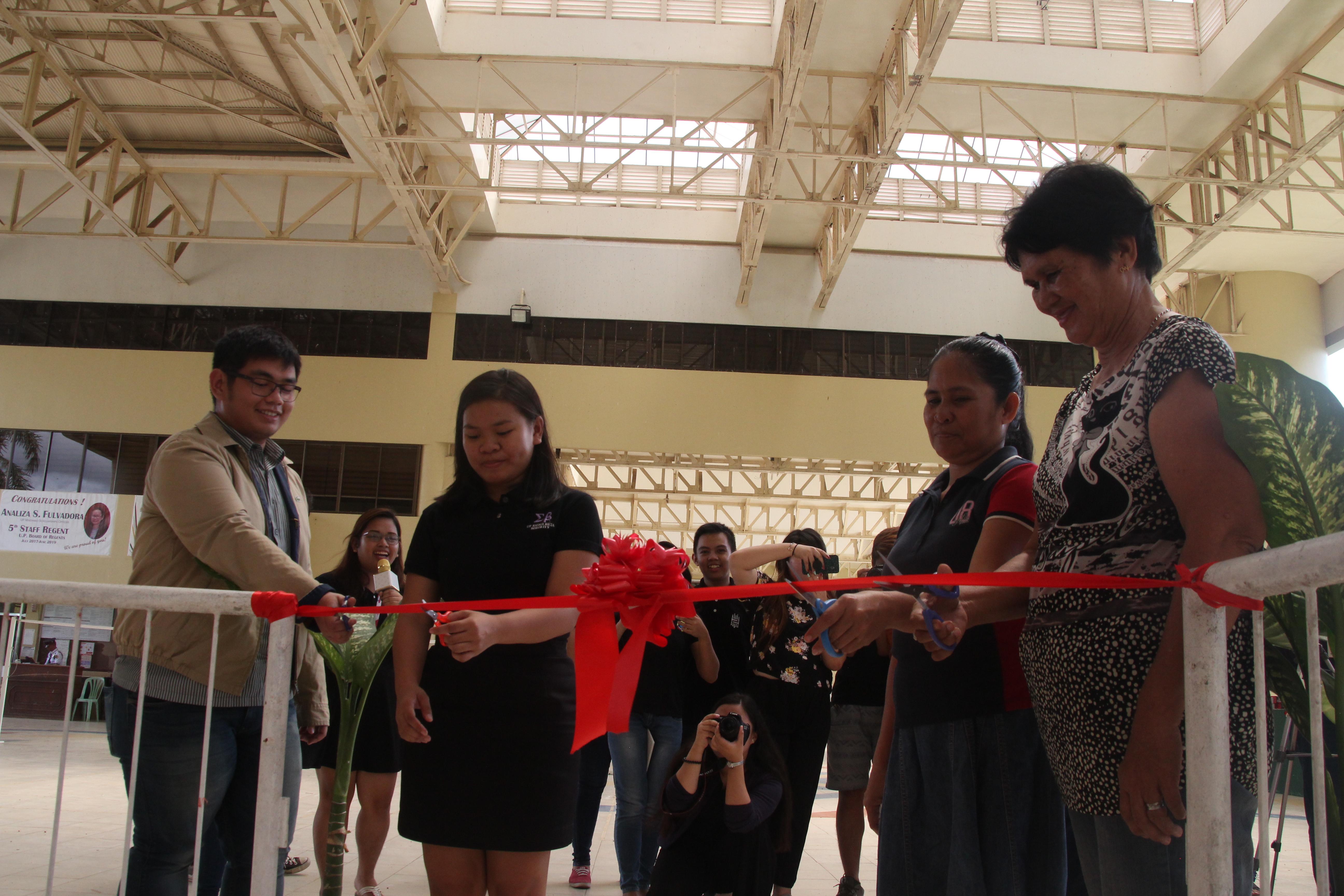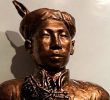
Ribbon cutting ceremony with Instructor Khurshid Kalabud Jr. and Exhibit Head Honey Arpon with Davao del Norte farmers Helen Deguilmo and Felicisima Resada. (Kenneth Paul P. Senarillos / davaotoday.com)
DAVAO CITY, Philippines — Students of University of the Philippines in Mindanao launched a photo exhibit that tackles about the struggles of agrarian reform beneficiaries in the region on Monday, November 27.
The exhibit titled “Pagbungkal” showcases 20 black-and-white photographs of farmers’ life in Barangay San Isidro Banana Plantation and Agrarian Reform Beneficiaries’ campout at the Department of Agrarian Reform Office in Tagum City.
The farmers have been demanding the expedition of installation orders that would give them land as part of the Comprehensive Agrarian Reform Program.
The Communication Arts students conducted a mass immersion in the farmers’ community prior to taking the photographs to be acquainted with the daily lives and struggles.
Photography class adviser Khurshid Kalabud Jr. said the class chose to feature the plight of farmers as the subject matter of the exhibit to highlight their situation.
He said camera has a “potential to shape the understanding about certain issues.”
Honey Arpon, project head of the exhibit, emphasized their role as visual storytellers.
“As a media arts student, it’s inspiring kasi para sa amin ang pag take ng photos ‘di lang sya basta basta; iba rin talaga ang magagawa ng photography para ma-irelay ang mga realities (As a media arts student, it’s inspiring because for us, taking those photos was not easy. Photos have their way of relaying the realities),” Arpon said in an interview.
The exhibit is open to public from November 27 to December 1, 2017 at the UP Mindanao Atrium in Barangay Mintal. (davaotoday.com)
Some Photos of the Exhibit

By Krizia Rafaella Bumanglag
KAMOT. Since 1986, Tatay Bonifacio Angcon has been tilling the farm land. From then until now, they still do not own the lands. They continue to struggle in looking for a sustainable livelihood that can generate income, as Tatay and all other farmers continue to plant vegetables.

By Marie Oval
INAHAN. Nanay Barsilisa Paulo believes farming is the only thing she’s good at and losing their land put her in a situation she does not deserve. She used to collect garbage to send her two granddaughters to school. Now that she’s old, she hopes to have an inheritance to give her grandchildren, a treasure to be passed on.

By Chalcedony Aninon
KAHIDLAW. For some, waiting might seem the worst thing to do in order to attain change. For these farmers in the Kampuhan, waiting is the only thing they could do since all their prior efforts to attain the said change were ignored by the Department of Agrarian Reform.

By Sittie Aminah Langco
GIPASAGDAN. The banana that did not pass the “Class A” standards were left behind, no longer viable for export. These bananas, the products of the farmers’ hardwork, are simply abandoned to rot.

By Issa Katherine Ibasitas
PASPAS. A woman washes the bananas as fast as she could since there are time constraints because there are still a lot of bananas in line to be packaged.

By Charlynne Marie Ovalca
TIGBAS. Tatay Ceasar Paloma, 66 yrs old, spends all his life taking care of the banana plants. They cut the dead parts of the banana and mark the banana shoots to replant them. They call this process “care control” and do it every day.










